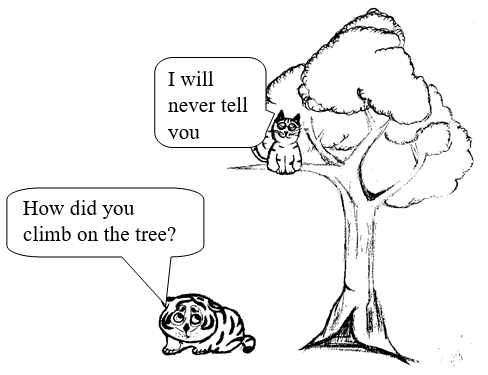Creating a Story Book for Children
Motikala Subba Dewan is an associate professor of English at Ratna Rajya Laxmi Campus, Tribhuvan University, the President of NELTA, and a core member (Nepal) of the Asian Creative Writing Group. She joined the CW group in 2010 when it was conducted in Nepal under the lead of Prof. Vishnu Singh Rai (Nepal) with Prof. Alan Maley (UK), and Prof. Jayakarn Mukundan (Malaysia). Then the journey has begun. CW Nepal organized 3 workshops: Kirtipur/Dhulikhel (2010), Birgunj/Kathmandu (2013), and Kathmandu/Pokhara (2019). Until the date, she participated in the CW Vietnam (2011), two times in CW Indonesia (2014) at Surabaya/Salatiga, and Hyderabad, India (2019).

For the first time Andrew Wright came to Nepal in the invitation of Prof. Vishnu Singh Rai in 2010 to conduct a 10-day workshop on "Writing Stories for the Children."Andrew Wright is an author, illustrator, teacher trainer and storyteller. He has written a number of Resource Books for teachers and Spellbinders, Storytelling with Children, Arts and Crafts with Children, and Creating Stories with Children for children. I was quite excited to meet the internationally renowned writer who is coming to Nepal, specially to conduct training for Nepali teachers and writers. We were 12 all together and the venue was at the Hill Top Hotel of Kirtipur.
Andrew gave homework to be done before his arrival in Kathmandu. They are as follows:
- to describe 5 people we know each in 50 words and 5 fictional people from the stories, films or TV we know.
- to write about difficulties, problems, dilemmas and conflicts. 20 main problems and 20 particular problems from the child’s point of view. He said that this is essential for writing any children's story.
- to observe children at home and school; in cafes, shopping malls, discos, computer game parlours, etc. If you get a chance talk to them about what: bores, excites, frightens, worries, concerns them and ask them which stories they like: CDs, Internet, Films, TV, books and magazines.
- be ready to share stories from your childhood, both fictional and family anecdotes or real life experience.
The last point triggered me and I wrote this story which I heard from my mother when I was 10 years old. And this story is very popular in our community, everybody knows why tiger cannot climb trees. And I never get time to publish it, though I wrote and prepared at that time. When I received an email from Alan Maley, there is a special slot for the C group in HLT Mag, I feel like to submit this story. When I visited HLT websites, I found all the articles are related to ELT for the children and teachers are very interesting and creative.
Andrew told us to use simple language and short sentences with big font and pictures and details. Use the words repeatedly, and for the speech or thinks use bubbles with believable characters which are familiar to them. Because this is for the children of lower level. This type of story book will help children to learn about cultures and to see the different world from home that is not like theirs's. Illustrated books will help them understand what they are reading and allow them to analyze and visualize the story. If they feel difficulty with the words, illustration will help them to figure out the story and increase their comprehension level. And stimulates their imagination, enhance their vocabulary, improve their creativity and intelligence. They can connect themselves with the content and story.
In Nepal we don’t have sufficient story books with illustrations. I believe this is my first effort to contribute to the children of Nepal and others. When I submitted the story Andrew commented on:
Tiger cannot climb the trees
4-3 the story is nice
5-5 pictures are very funny
5-5 it was an excellent story
5-5 the story was interesting but some spelling mistakes.
4-5 this story is very interesting
Here goes my story book with pictures. I am not an artist; these pictures are drawn by Nripesh Rai my sister-in-law's son.
'Tiger Cannot Climb Trees'
Motikala Subba Dewan
Page-1
Once upon a time, an old cat and a young tiger lived together in a jungle. The cat was the uncle of the tiger and the tiger was his nephew. The cat would bring food for both of them. He looked after his nephew.
Page-2
One-day, the cat called his nephew near him. He said, "Now time has come for you to learn how to hunt animals." The tiger listened and nodded his head obediently.

Page-3
Next day, early in the morning, the cat took his nephew into the jungle.
The cat moved slowly and quietly. His every step was watchful and careful. It was the first rule of hunting. The tiger watched his uncle carefully. Quickly, he learned the first rule.
Page-4
After a week, the cat taught his nephew the second rule of hunting. He attacked a rabbit and grabbed it. The tiger watched his uncle's every move of grabbing rabbit.

Page-5
The tiger practised and practised many times. He learned the second rule of hunting. He learned to hunt animals.
Page-6
One-day, the cat became sick and could not go for hunting. The tiger went alone to get food for both of them. That whole week the cat slept and took rest. He was happy. He was happy with his nephew. But the tiger was not happy.

Page-7
Next morning, the cat asked the tiger to bring him rabbit's meat. The cat understood his nephew was lying. He had noticed changes in the tiger's behaviour and voice.

Page-8
The cat was weak. He said nothing and slept. The tiger got up quietly at night and went for hunting. He killed a dear and ate it alone. He did not bring even a small piece of meat for his uncle.
Page- 9
Tomorrow morning, the cat requested his nephew again to bring him some food.
The tiger pretended not to listen to his uncle. He turned his back.

Page- 10
The cat requested him again for food. The tiger growled and pushed his uncle angrily. The cat was angry. Then the tiger lifted its right paw to attack his uncle.

Page- 11
The cat ran away fast and climbed up a tree. Next moment, the cat was sitting on the high branch of tree.
The tiger was surprised how fast his uncle climbed on the tree. The cat said to his nephew, "I taught you two skills but I didn't teach you the third skill: how to do climbing."

Page- 12
The tiger jumped and jumped to reach the cat but could not climb the tree.
From that day, the cat and the tiger never live together. Tiger can hunt animal but cannot climb tree.
The End
Please check the Pilgrims f2f courses at Pilgrims website.
Please check the Pilgrims online courses at Pilgrims website.
The Ukraine Collection
ed. Alan Maley, UKCreating a Story Book for Children
Motikala Subba Dewan, NepalFound in Translation
Jane Spiro, UKLaika
Jamie Keddie, SpainNo More
Charles Hadfield, New ZealandPerceptions of Special Teachers as Described by Vietnamese Students
Phuong Le, VietnamPoems to Stories
John Kay, UK